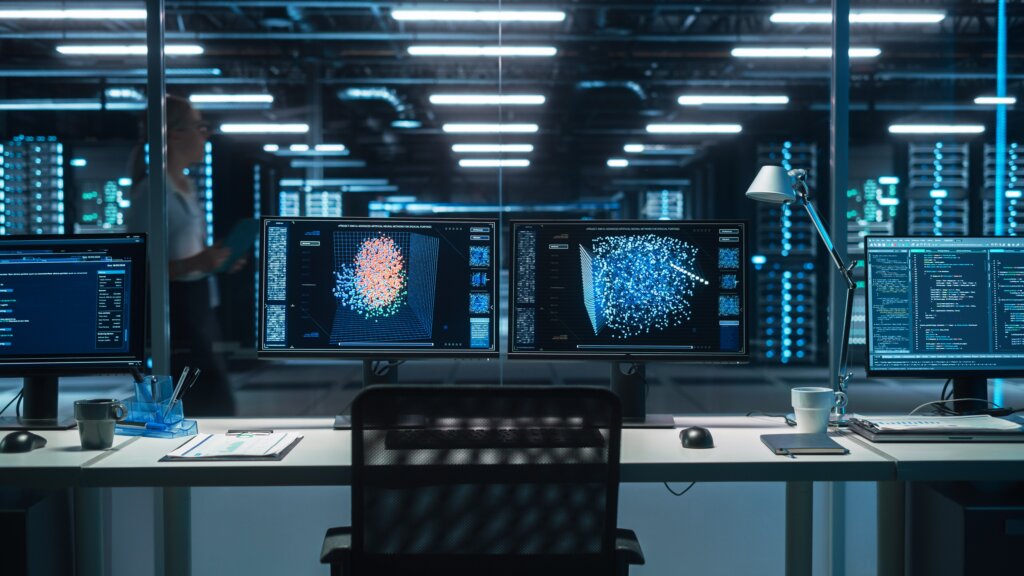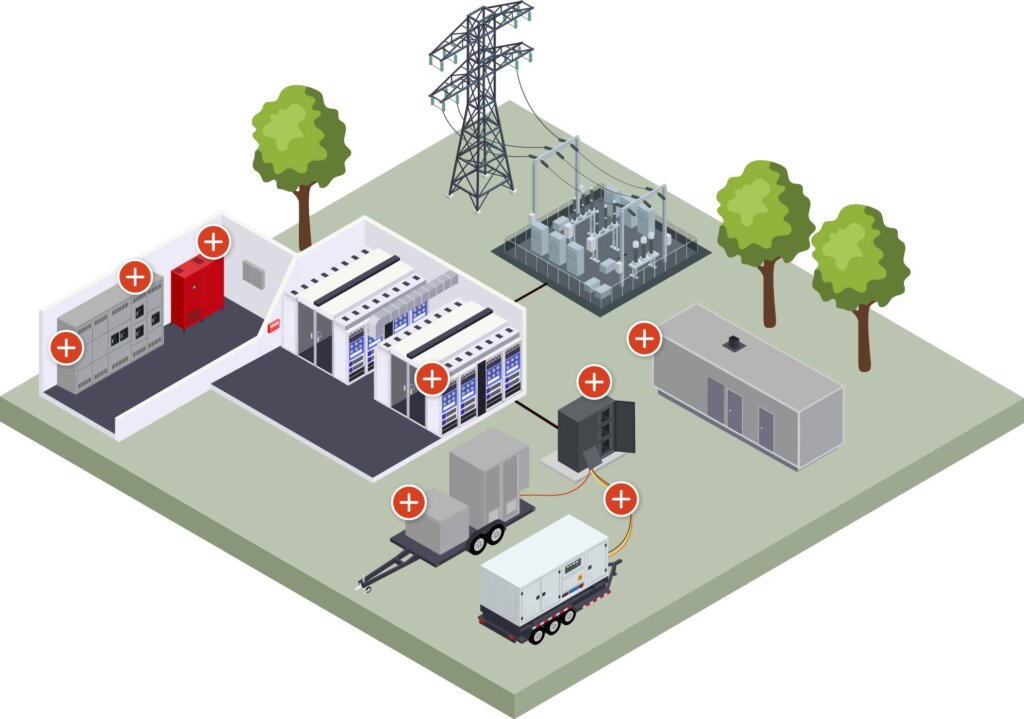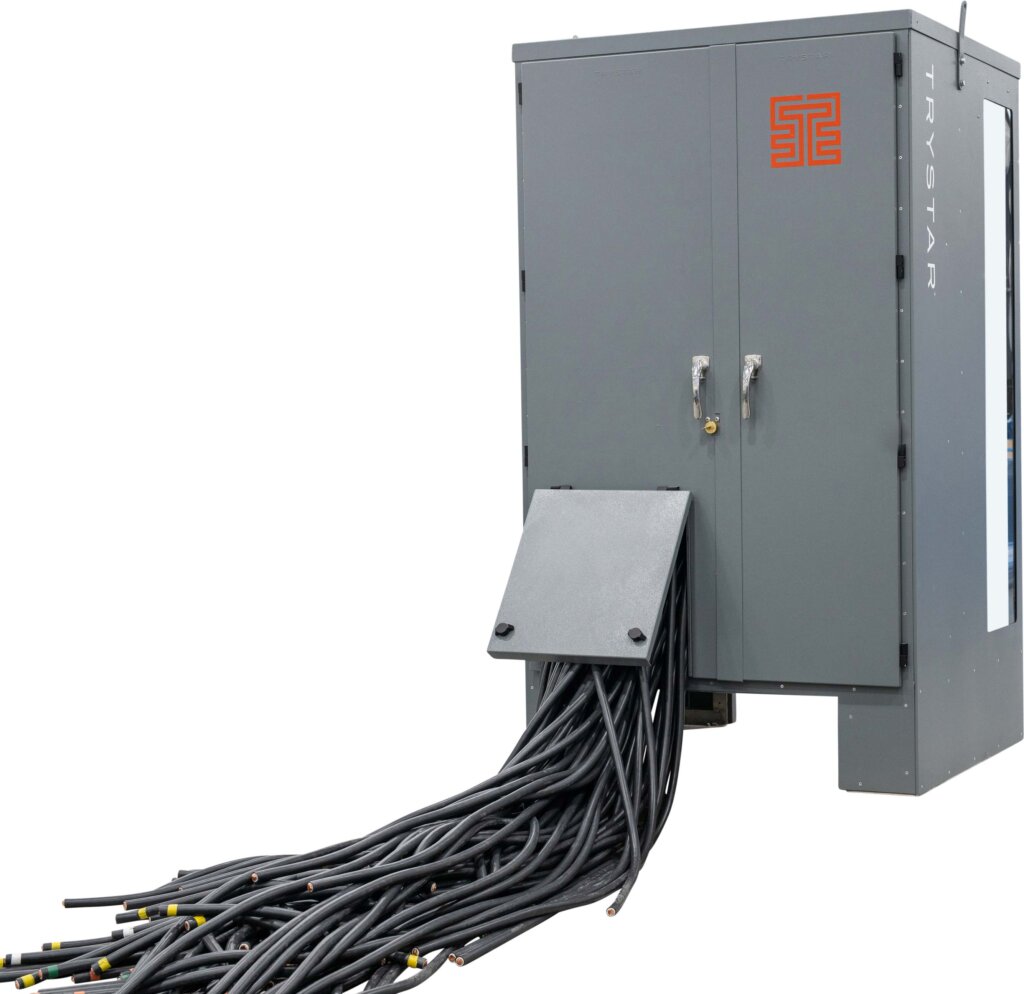Data centers demand robust power systems that transcend traditional uptime metrics. In an April 10, 2025 article, the International Energy Agency (IEA) projects that electricity consumption by data centers is expected to more than double by 20301. As a result, the additional strain on the electric grid presents increasingly complex challenges. True electrical resiliency in this context involves the deployment of advanced infrastructure capable of absorbing and mitigating the impact of electrical shocks, adapting dynamically to fluctuating conditions, and maintaining seamless operations amid grid instability and environmental disruptions.
The future of power systems in data centers demands a shift towards a more proactive, engineered approach to resilience. This involves designing systems that not only prioritize reliability but also emphasize survivability and operational continuity under duress. Advanced power architectures must incorporate modular and scalable solutions that can be rapidly deployed and reconfigured to meet changing demands. Additionally, the integration of renewable energy sources and energy storage technologies can provide an additional layer of resiliency, enabling data centers to operate independently of the grid during prolonged outages or disruptions.
To achieve this level of resilience, data centers must implement comprehensive disaster recovery plans and business continuity strategies that encompass power system design and management. By embracing power solutions, data centers can enhance their scalability and ensure uninterrupted operations, thereby reinforcing their role as critical infrastructure in an increasingly digital and interconnected world.

The Case for Electrical Resiliency
Electrical resiliency demands a comprehensive strategy to address a broad spectrum of real-world threats. Utility failures, such as power outages, voltage fluctuations, and “dirty power” can severely disrupt operations … necessitating the integration of advanced power management systems. These systems should include voltage regulators and K-rated isolation transformers, as well as uninterruptible power supplies (UPS) and backup generators capable of providing immediate power continuity. Additionally, extreme weather events pose significant risks, requiring data centers to incorporate resilient architectural designs and environmental controls that can withstand such conditions. This includes flood defenses, temperature regulation systems, and redundant cooling mechanisms to manage heat loads effectively.
Moreover, equipment faults and aging electrical grid infrastructure present ongoing challenges that necessitate proactive maintenance and monitoring. Implementing predictive maintenance technologies, such as IoT sensors and data analytics, allows for real-time monitoring of equipment health and performance, enabling early detection of potential failures.

Trystar’s “ULTRA-K”, a three-phase high efficiency, K-rated power conditioning isolation transformer.
Key challenges to electrical resiliency include:
- Grid outages and voltage instability which lead to unexpected power disruptions and fluctuations that jeopardize the stability of critical systems. Mitigation solutions include robust power conditioning, voltage regulation, and backup power solutions to ensure continuous and stable power delivery.
- Growing power densities and heat loads which present a formidable challenge for data centers, especially when also considering the complexity of extreme weather and the dangers of prolonged high temperatures. Not only does the increasing concentration of computing resources generate significant heat, but increasing high temperature events also demand more cooling in these conditions. Both the generation of heat within the data center and the high external temperatures must be effectively managed to prevent equipment failure. Advanced cooling technologies efficiently dissipate heat and maintain optimal operating temperatures, ensuring the reliability and longevity of critical infrastructure.
- Regulatory pressures on backup generation and emissions which compel data centers to adopt more sustainable and environmentally friendly power solutions. This challenge drives the need for innovative backup systems, such as natural gas generators, fuel cells, battery energy storage … as well as renewable energy sources such as solar and wind generation. These types of innovations not only comply with regulatory requirements but also enhance the overall sustainability and resilience of data center operations.
- Limited on-site maintenance resources during crisis events which pose a significant challenge to quickly address and resolve technical issues. This constraint requires remote monitoring and management systems, as well as automated diagnostic tools for rapid identification and resolution of problems … thus ensuring operational and business continuity even under adverse conditions.
To effectively address these challenges, electrical systems in data centers must be designed with advanced capabilities that allow for rapid reconfiguration and adaptability. Implementing intelligent power distribution units (PDUs) and smart grid technologies that can dynamically adjust to changing load demands and optimize power flow. Reliable backup activation is ensured by integrating automated switching mechanisms that seamlessly transition to backup power sources, such as batteries or alternative generators, without interrupting service. Additionally, these systems must be scalable to accommodate IT growth. By supporting dynamic load profiles and ensuring seamless scalability, data centers can maintain high availability and resilience in the face of evolving demands and potential disruptions.
Key Components of a Resilient Power Strategy
A resilient electrical architecture combines diverse systems and strategies to ensure continuous uptime and maintain system integrity in data centers. This architecture integrates redundant power supply paths, such as dual power feeds and uninterruptible power supplies (UPS), to provide immediate backup in case of primary power source failures. Advanced energy management systems are employed to monitor and control power distribution, optimizing efficiency and reducing the risk of overloads.
Additionally, the inclusion of renewable energy sources and energy storage solutions enhances sustainability while providing additional layers of resilience. Through these integrated systems and strategies, a resilient electrical architecture effectively safeguards against disruptions, maintaining operational and business continuity while protecting critical infrastructure.
Key components of a resilient power strategy often include:
- Dual utility feeds and redundant UPS topologies for continuous clean power.
- Generator docking stations and permanent load bank connections for rapid power recovery and routine testing.
- Transfer switches (ATS/MTS) and paralleling gear to manage backup sources seamlessly.
- On-site energy storage or generator-based microgrids to enable “temporary islanding” by disconnecting from the main power grid, while sustaining operations until stable grid conditions are restored.
- Portable power systems for emergency response, maintenance bypass, or rapid deployment scenarios.
- Sequence of event recorders (SER’s) provide precise 1 millisecond time-stamped power event reporting to enable root cause analysis and advance system diagnostics.
- Time sync hubs supply accurate time synchronization for intelligent electronic devices (IED’s), power meters, protective relays, transfer switches, UPS, and programmable logic controllers (PLC’s).

Advanced fault isolation techniques, such as automated circuit breakers and intelligent monitoring systems, enable the identification and containment of issues in specific areas, preventing them from affecting the entire system. Additionally, the ability to test components under load using sophisticated simulation tools ensures that new installations or upgrades can be validated for performance and reliability without impacting the overall functionality of the data center.
How Trystar Supports Data Center Resilience
Trystar brings decades of expertise in custom-engineered electrical power solutions tailored to mission critical environments. For data centers of all sizes — from hyperscale to colocation to enterprise edge — Trystar delivers field-proven products and systems that directly support electrical resiliency goals, including:
- Custom power distribution panels, switchgear, and cable assemblies rated for high-reliability applications and scalable load demands.
- Docking stations that enable safe, code-compliant connections to generators or load banks during planned maintenance or emergency situations.
- Manual transfer switches (MTS) and automatic transfer switches (ATS) engineered to customer specifications for fast, reliable power source switching.
- Portable power distribution and temporary power equipment to support system commissioning, disaster recovery, or facility upgrades without service interruption … thus ensuring business continuity.
- Load banks and power testing solutions to validate power continuity, verify generator capacity, and support preventive maintenance.
- Emergency lighting inverters to ensure that critical egress lighting remains operational during power outages.
From initial design consultation to product customization and onsite support, Trystar acts as an extension of your specifying, engineering, and facilities teams — helping you plan, implement, and maintain power systems that will not fail when you need them most.
Conclusion
Power resiliency is non-negotiable. It’s a mission critical requirement in today’s digital economy. With utility infrastructures under increasing stress and downtime costs climbing, the only path forward is to build smarter, more adaptable, and thoroughly-tested electrical power systems.

Trystar’s 1201 – 5000 Amp Docking Station With An Integrated Automatic Transfer Switch
Trystar is your partner in achieving that resilience — providing the tools, technology, and technical support to help you maintain uninterrupted operations no matter what challenges arise.
Together, we can build a power strategy focusing on data center resiliency that is ready for anything.
Connect with one of our industry and application experts today!
__________________________
References:
1 International Energy Agency. Special report entitled “Energy and AI”, posted as News on the Agency’s website April 10, 2025. https://www.iea.org/news/ai-is-set-to-drive-surging-electricity-demand-from-data-centres-while-offering-the-potential-to-transform-how-the-energy-sector-works